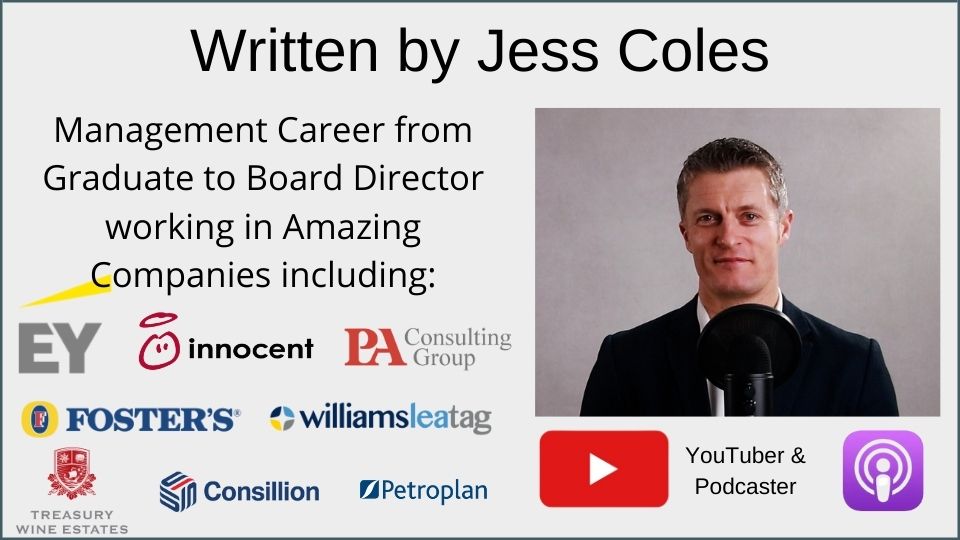Active Listening Skills for Managers

Active listening skills for managers, can make the difference between being an okay manager and a good manager. 85% of what we learn is through listening. To manage a team effectively and well, learning about each individual and what is going on in the team is essential.
In a typical business day, we spend around 45% of our day listening, 30% talking, and 25% reading and writing. Less than 2% of professionals have had formal training on understanding and improving their listening skills.
This Article Covers:
7 Common Actions of Active Listening
10 Signs to Pay Attention to When Actively Listening to an Individual
How to Build Awareness of Group Dynamics and What’s Going on Around You
Watch on YouTube
Listen on Podcast

Given how much time we spend listening and how few are taught to improve their listening skills, working to improve your active listening skills will absolutely help your career progress and enjoyment of managing others.
Consistently demonstrating active listening skills:
- Makes the speaker feel you care and are interested in them
- Encourages the speaker to talk more, often leading them to reveal more about their thoughts and feelings
- Active listening builds the speaker’s trust in you. Trust is essential in building relationships
- Active listening skills gives you insights into the other person’s emotional state which help you manage them better
- Actively listening Improves the amount you learn about the other person and the situation
- Gives you better awareness of group dynamics and what is happening around you at work
By the end of this article you will know what to work on and look out for so you can further improve your active listening skills.
There are many misconceptions about what active listening skills for managers actually is so here are

7 Common Actions of Active Listening Skills for Managers
Actively listening requires your concentration and focus on the other person throughout what they are saying. Most of the time we passively listen, taking in around 25% of what is being communicated. Using actively listening skills increases this percentage considerably.
First Action – Keep an Open Mind
When actively listening keep your mind in the present and what is being communicated to you. Do not think about what you are going to say next or allow your mind to drift onto the current problem you are grappling with. Concentrate on what is being communicated to you.
Second Action – Maintain Eye Contact
Maintaining eye contact with the other person to show your interest and attention to them. If they look elsewhere, keep your eyes focused on them to demonstrate you are continuing to listen.
Third Action – Manage Your Body Language
Active listening is to manage your own body language to show your interest – use encouraging facial expressions, head nods and attentive postures. Be natural in this. Your body language should be shouting to the other person “ I am interested in what you are saying”.
Fourth Action – Use Paraphrasing and Summaries
At appropriate moments when there is a long pause in conversation, use paraphrasing and summarise what the other person has been talking about. This provides proof that you have been listening and taking in what is being communicated. Try to use their words and phrases rather than your own.

The Fifth action – Keep an Open Mind
of active listening is always keep an open mind. With hold any judgement, don’t jump to conclusions and keep listening until the other person has finished. If you judge too early, you will not really be listening to the remainder and will miss important parts. The other person will sense your drop in attention.
Don’t forget that you also have your own assumptions, beliefs and approaches to everything, and these can often get in the way of you learning the other person’s point of view, assumptions, beliefs and approaches. Keep an open mind to learn about them. You will find you will learn plenty in return.
The Sixth Action – Don’t Interrupt the Speaker
Don’t interrupt what the other person is saying. Don’t finish their sentences for them. When they appear to have finished speaking, wait a good few more seconds to make sure they are not just taking a pause before speaking. Don’t interrupt.
The Seventh Action – Ask Questions
Don’t be afraid to ask questions to probe for more depth or expand on points the person you are listing to is making. Ask open questions (rather than closed questions) so you get a more detailed answer. Asking questions another great way to confirm you are interested and taking in what they are saying and is a key action within active listening skills for managers.
Practice these actions and each will get better and better. After a while you will be using your active listening skills without being conscious of doing so.
To help you understand what you are using these skills for let’s go through
10 signs to pay attention to when actively listening to an individual
When you are using your active listening skills in a meeting with an individual, here are some of the things you should be paying attention to:
- The choice of words they say
- The tone of voice
- The Pace of Voice
- Where they pause or where they don’t
- Their Facial expressions
- Their eyes – their movement, when they look away, when they don’t
- Their attention levels – for instance how they are sitting or standing and what it is saying about their thoughts and feelings
- What they are doing with their hands – are they calm, nervous, angry etc
- Changes in their skin colour – for instance going whiter or blushing
- What is their general body language telling you? Do they have any nervous habits? Are they interested, excited, bored, aggressive etc.?
Actively listening skills taps into all the different ways people communicate. Developing these skills give you great insight into the other persons mood, emotional state, and thought process. Having this additional knowledge will make you an even more effective manager.
For instance, do all the non-verbal clues support what is actually being said or they in conflict? What might this mean for the situation they are in? What impact does this have on the approach you will take as a manager?
Getting a deeper understanding of the other person – their mood and emotional state for instance – puts you in a better position to adapt your management style to the situation, to communicate more effectively with them. You can for example adapt your body language, pace and tone of voice to fit in with their current state or to help them get out of their current state.
Actively listening skills are skills that anyone can learn and improve. Work out the actions you are going to take to improve your active listening skills and practice them day in day out. Experience will help you correctly interpret what you observe and be able to correctly use this to improve your effectiveness as a manager.
Of course, as a manager we deal with many group situations so let’s talk about
How to build awareness of group dynamics and what’s going on around you
These same active listening skills can give you great insights and awareness of the dynamics of the various interactions between group members.
Which team members influence professionally or socially in the group. Which team members support the group culture, and which detract? Which group members lead, and which follow? Who likes who and who struggles with who? Good managers are tuned in to the dynamics that are taking place around them at all times.
As a manager, everyone is watching your every move and action. How aware are you of your own body language and non-verbal communication? Team members will trust this a lot more than what you say because it is hard to fake. Build your awareness of what are you communicating non-verbally to team members in different situations?
Awareness is the first step to being able to better manage your own non-verbal messaging. You can then start to change this. For example, sit or stand straight, increase the volume of your voice to project confidence, or slow your voice pace down to portray calmness. Experiment and be authentic!
Consciously look for the group dynamics happening around you. What are all the non-verbal clues on display telling you? What does it mean? The more you pay attention, the more you will be aware of. The more you practice, the easier this awareness becomes until it is – always on – as such.
Enjoy building your active listening skills. It is an exciting learning journey in many ways and great for your manager career.

I have, throughout my career, found actively listening skills is one of the most important skills to develop.
You simply find out so much – ideas, issues, hopes and dreams – and can use this additional knowledge to support your team members even better. This is turns helps you become an even better manager.
Listening is like finding the golden goose that keeps on giving
A win for everyone!





